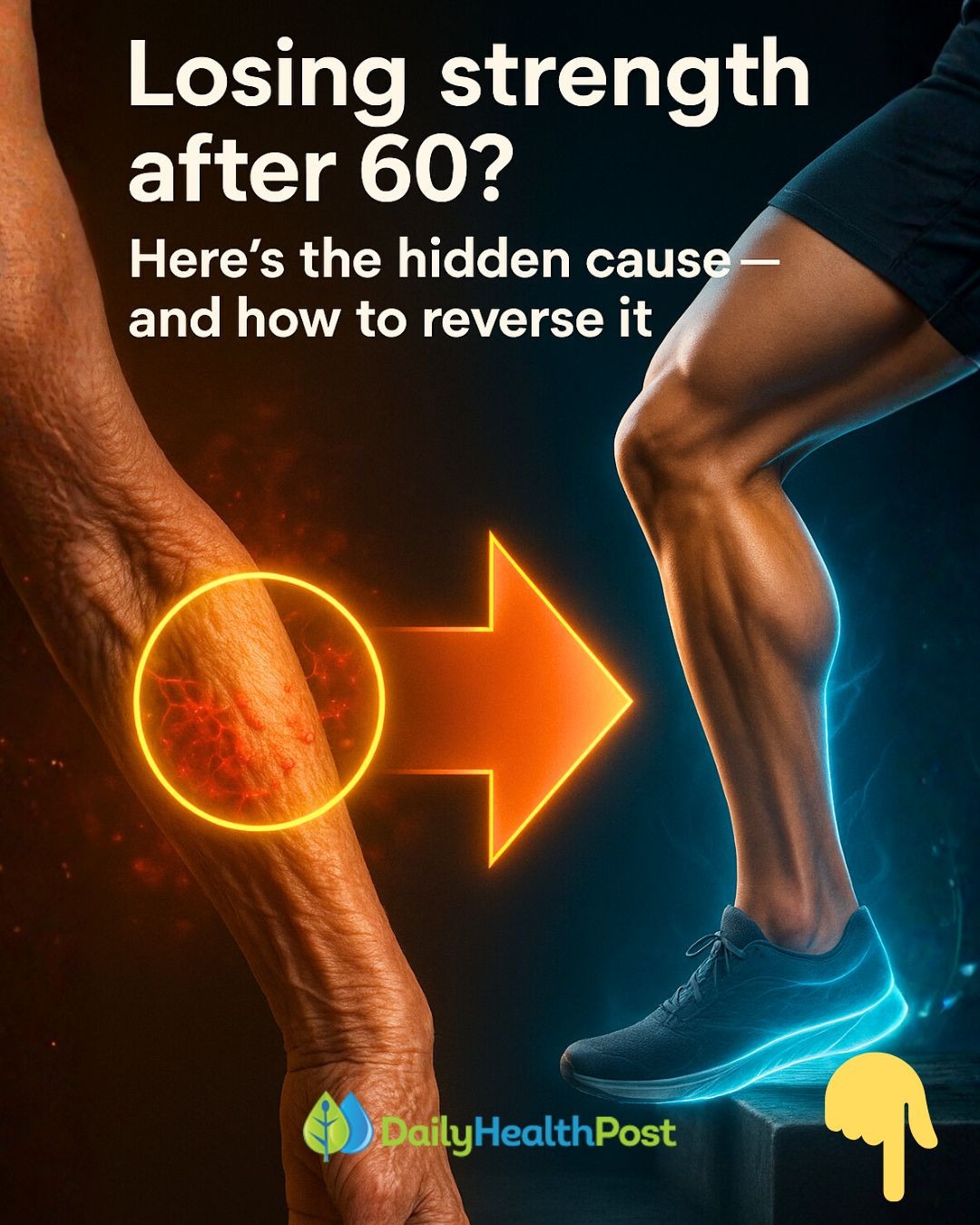Have you noticed that you’re losing strength, almost without realizing it? Climbing stairs takes more effort, you get up from a chair a little slower, and you might just think, “Well, it must be my age,” or maybe, “I’m not getting enough protein.” And yes, protein is absolutely essential, but it’s not the whole story. You can have all the bricks in the world, but if there’s no one there to lay them, the muscle simply won’t get built. Here’s an uncomfortable truth: it’s not just about age. Your muscles start to “turn off” when they stop receiving what they need. And I’m not just talking about food; I’m talking about signals—signals of movement, rest, and strategy.
Why does this matter so much? Because your muscle strength isn’t a luxury. It’s the very thing that allows you to move freely, maintain your balance, and live an independent life. Losing it isn’t a foregone conclusion of aging; it’s a condition called sarcopenia, and the good news is that you have incredible power to fight it. In this article, we’re going to dive deep into what truly works to recover your strength, especially after 60. We’ll debunk the common myths that are secretly robbing you of your vitality and give you a practical, step-by-step guide to start rebuilding your muscle and reclaiming your power, starting today. (Based on the insights of Dr. Alberto Sanagustín)
- Myth #1: “If I just eat more protein, I’ll be fine.”
Yes, protein is non-negotiable. You cannot have muscle synthesis without enough protein. The problem? Piling your plate with chicken breasts or chugging protein shakes won’t do much if your muscles don’t receive a clear order to grow. It’s like having a stack of bricks (the protein) but no bricklayer (the exercise) to put them in place. You need both. Without the stimulus of resistance, there is no signal to build. - Myth #2: “A supplement will solve my problems.”
Many people think a magic pill or powder—creatine, whey protein, collagen capsules—is the answer. Can they help? Yes, they can be supportive. Are they essential? No. And do they work without movement? Almost never. Creatine, for example, has excellent research behind it, but it delivers the best results when combined with strength training. Supplements should only be used if you know exactly why you’re taking them and, ideally, with professional guidance. - Myth #3: “It’s normal to lose strength because of my age.”
It’s common, but it’s not normal or inevitable. There are 80-year-olds who climb stairs with ease and 60-year-olds who feel they can’t keep up with their own bodies. Age is a factor, but your lifestyle is a much bigger one. Your body doesn’t have an expiration date; it has a stimulus threshold. If you don’t cross that threshold, you will go backward. - Myth #4: “Eating ‘healthy’ is enough.”
This depends entirely on what you mean by “healthy.” For some, it means eating “lightly”—a bit of fruit, some whole-wheat crackers, a small salad. But if you’re not giving your body sufficient protein, healthy fats, key minerals, and enough overall energy, it lacks the raw materials for structure. It’s like trying to repair a house with only electricity but no lumber, cement, or nails. - Myth #5: “Walking is enough exercise.”
Walking is fantastic for your heart, your mood, and your general mobility. But to rebuild muscle strength, you need more. Your muscles need resistance, a load, a challenge. We’re not talking about lifting heavy weights at a gym. We’re talking about simple things: getting up from a chair 10 times in a row, stepping up and down on a single stair, or even just holding your own body weight for a little longer each day. That is how you send the right signal.
